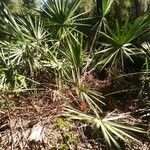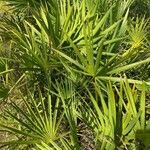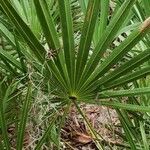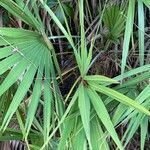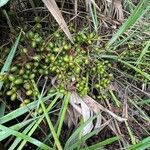Stems usually creeping, branched, sometimes ascending, to 1--3 m. Leaves yellow-green, green, or silvery green, stiff; petioles finely to strongly serrate; hastula present on both sides of leafabaxially and adaxially. Flowers creamy white, fragrant, 4--5 mm. Fruits ripening from green through orange to black, length ca. 2 cm, diam. 1 cm. 2n = 36.
